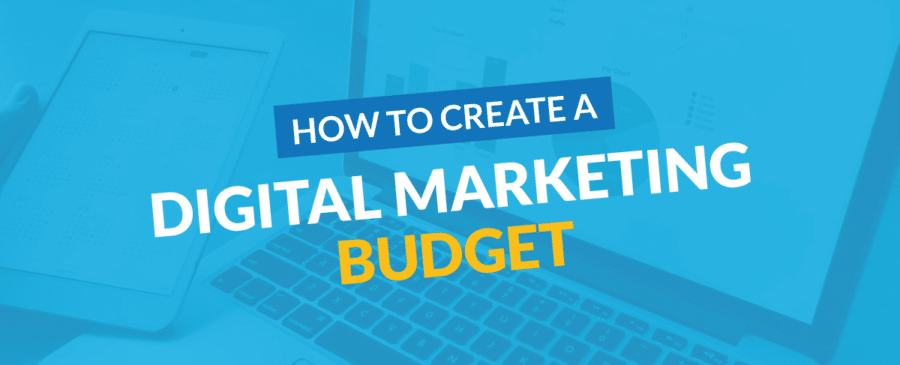How to Create a Digital Marketing Budget

 With digital marketing becoming increasingly powerful compared to traditional methods, many teams still struggle with striking the right balance for creating a marketing budget to address digital needs.
With digital marketing becoming increasingly powerful compared to traditional methods, many teams still struggle with striking the right balance for creating a marketing budget to address digital needs.
While it may seem overwhelming to craft a budget that strikes a right balance and gets a brand the engagement it needs, it is definitely doable.
However, the strategy for crafting an annual marketing budget needs to address many aspects of the brand into consideration. Creating a holistic digital strategy means taking careful stock of what the needs of a brand are, and the level of engagement needed to maximize return on investment.
Another factor in digital marketing that needs to be examined is how to allocate revenue accordingly against traditional marketing methods. There is a constant push and pull of organic versus paid engagement that must be weighed in a digital marketing budget.
Here’s three important considerations when putting together your digital marketing budget.
BLOG: How to Create a #DigitalMarketing Budget Click To Tweet
1) What are the fundamental goals of your brand
This might sound like a redundant idea for consideration, but it is an aspect many brands often overlook when thinking about budgets. It might sound easy to just allocate revenue to haphazard ads and hope for the best, but in this increasingly digital world everything must be laser focused.
The first step is to ascertain what the goals are with digital marketing efforts. Is it to drive growth and build a brand from the ground up? If that is the case, then revenue must be directed towards efforts that will drive organic growth as well as strategic paid advertisements and content.
Understand Your Brand’s Niche
In order to gain followers, there needs to be a consistent effort to provide effective and trustworthy content to gain loyalty amongst followers.
However, if the brand already has solid footing within digital channels (even if it is a small footprint) then resources must be diverted towards maintaining that growth, and building upon it.
This is a more sales-targeted strategy, and the budget must reflect that. Is the goal to convert first-time buyers, shorten the consumer journey and/or create efficiency in the buying process?
If it is a newer business, then social media awareness and growth for the brand is the most pressing need to drive traffic. But established businesses may need to ramp up their digital efforts and explore avenues such as conversion optimization, mobile marketing and/or paid search.
There are just some of the questions to ask in order to get the process started. It will dictate what investments are made, so it is crucial to understand exactly what sort of niche the brand needs to carve out in order to differentiate itself.
Create a Holistic Plan
Creating a holistic plan will only reap rewards if it is tailored exactly to your business, and what its overall aims are rather than spending money randomly and seeing what works.
A recent article in Forbes expounds on this, stating,
Creating a holistic plan will only reap rewards if it is tailored exactly to your business Click To Tweet“Marketers are more mature now with capable measurement practices. This means they will spend judiciously on just what works for their goals. And many are dialling back pure digital advertising investment, prioritizing instead non-working investments in data, technology and customer experience.”
2) What research is being done?
This may sound broad and somewhat vague, but research should be an ongoing process during digital marketing campaigns. While analytics play a large role in digital marketing, campaigns will not reach their full potential if the right research is not done.
Before investing full steam in social media, use your overall goals and spend time doing research on who the main demographics are for new user acquisition, what demographics you currently have that you want to retain and where the gaps are.
For established customer bases, it is important to do research and understand if your previous campaigns have been successful and what drove that success. It is also worth getting feedback on what pain points users have, and what they feel is missing from your brand experience.
Harnessing Information
Marketing budgets need to include a component for research in order to gain best results from future marketing efforts.
Investing in digital media means having more access than ever before to customers. Though it might be harder to reach in this competitive space, digital media provides far more insights than traditional advertising methods.
The most successful digital marketing strategies are the ones that harness that information to create a solid foundation for future success.
Dig deep to understand who your primary users are, what their preferences are in order to retain them. If targeting new customer segments, then the same concepts apply. In order to drive traffic, content and digital advertising methods need to be hyper-focused for new user acquisition.
Research should be an ongoing process during #digitalmarketing campaigns Click To Tweet
3) What are the measures for success?
Once you have decided what the primary goals are for digital marketing, the natural evolution to this process is to decide what the best metrics for success are.
Each brand has different analytics and key performance indicators it uses to measure success for digital marketing, so it is important to explore all the options and settle on at least three to five measures as a starting point for benchmarks.
If the goal is brand awareness, then what are the right measures for your specific brand? Is it number of shares or number of followers? Is it through sponsored content or organic, and what is the reach for each of these.
How many users go from your sponsored content to your page to follow? Or is the goal to get content shared on as many platforms as possible to gain maximum visibility?
However, if the goal is to grow an existing following, then the measures differ. How many users complete a buyer journey but do not purchase what is in their cart? Or how leads are generated from first-time visitors and are they purchasing right away?
In this case, a digital marketing strategy but also identify pain points users have in order to improve the process and gain efficiency.
Key Performance Metrics
There are a myriad of metrics to consider in both scenarios, and wading through them is often an arduous task. However, these analytics are key in understand return on investment, so it should not be ignored. It is understandable that not each aspect of the analytics will be useful.
However, once key performance metrics are established, they should be reviewed at least once a month to see if the strategy in place is successful or whether there needs to be realignment.
Digital media marketing budgets will likely see changes over time, especially considering how rapidly digital marketing is evolving. However, these considerations will likely remain static, but the methods of engagement will change.
3 important considerations when putting together your #digitalmarketing budget Click To TweetUsing the right research and investing in the resources that make the most sense for your brand are instrumental to get maximum return on investment for marketing efforts. To learn more, please contact us.







Vizteck Digital Strategy
Completely agree with your stuff, these all strategies need to follow by everyone who wants to defeat their competitors. Thanks!